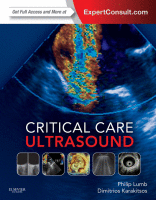Physical Address
304 North Cardinal St.
Dorchester Center, MA 02124

Overview Acute respiratory distress syndrome (ARDS) is a clinical entity characterized by acute inflammatory lung injury, increased pulmonary vascular permeability and lung weight, as well as loss of aerated lung tissue. The clinical hallmarks of ARDS are hypoxemia, bilateral opacities…

Overview The great potential of ultrasound in the study of lung parenchyma lies in its ability to detect alterations in parenchymal density resulting from loss of alveolar air with or without increase of interstitial fluids. Moreover, pleural disorders can be…

Overview Pleural ultrasound is influenced particularly by the presence of ribs and aerated lung. Ribs provide a shadowing artifact that completely blocks the transmission of ultrasound waves. Aerated lung is a powerful reflector of ultrasound waves and creates a typical…

A-line: Sonographic reverberations of the pleural line. These hyperechoic horizontal lines appear at regular intervals deep to the pleural line and between the rib shadows. B-line: Also called a lung rocket, this hyperechoic vertical sonographic artifact arises from the inferior…

Venous thromboembolism (VTE) is a major problem in patients in the intensive care unit (ICU), as previously analyzed ( Chapter 9 ). VTE will develop in approximately 12% of ICU patients despite appropriate prophylaxis. Furthermore, pulmonary embolism (PE) is common…

Overview Since its advent in 1977, percutaneous coronary intervention (PCI) has become a dominant treatment modality for ischemic coronary artery disease, especially unstable angina and acute myocardial infarction. During the last 2 decades, intravascular ultrasound (IVUS), a catheter-based technique that…

Overview Arterial catheterization is a frequent and essential procedure that is used in the intensive care unit (ICU) for accurate hemodynamic monitoring and repeated sampling of blood for analysis. Blind or palpated catheter insertion can be difficult because pulsations and…

Overview The concept of achieving central venous access by cannulation of a peripheral arm vein is old, although only in the last decade has the peripherally inserted central catheter (PICC) emerged as a safe and cost-effective option. In the last…

Ultrasound guidance to obtain vascular access has become increasingly more popular over the past decade. Advances in ultrasound technology have enhanced its ability to detect and interrogate smaller vascular structures for cannulation purposes. Given the potential complications that can develop…

General considerations and ultrasound evaluation of peripheral and central veins in pediatric patients (preprocedural scanning) Ultrasound offers the advantage of preprocedural evaluation of all possible venipuncture sites as detailed in previous chapters. This is an essential feature of the ultrasound…